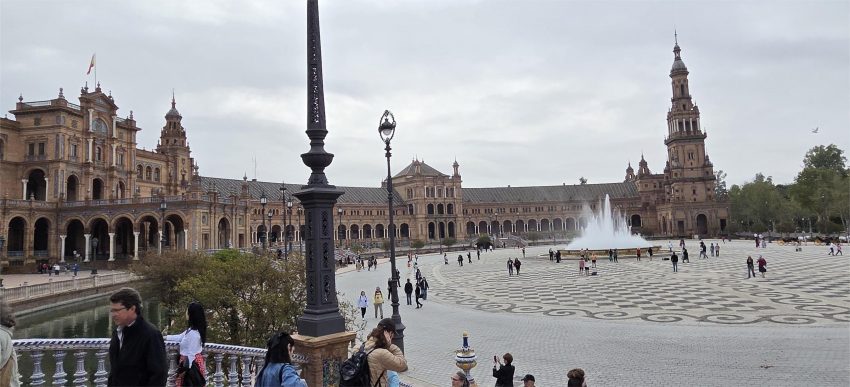Vibrant, exciting, traditional; all words that can be used to define the city of Seville. Friendly people and breathtaking sites where history and culture abound are also accurate descriptions and the reasons why you too will want to visit this beautiful city.
Located in the south of Spain in the Andalusian countryside, Seville is a two hour bus ride from the port of Cadiz where your ship will dock. If you are doing a tour of Spain be sure to include at least a couple of days in the birthplace of Flamenco.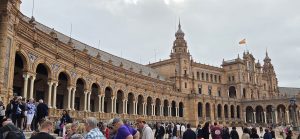
Our first stop was a tour of the exterior of the Spanish Pavilion which was built for the 1929 World’s Fair. The event was to celebrate the colonies in North and South America. Each country built its own pavilion, which still stand today, however most now house offices or government consulates. We entered through an unassuming door off a side street with the promise that what waited for us on the other side would take our breath away. We were not disappointed.
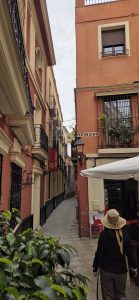 Our bus then dropped us off in the Old Town, a UNESCO heritage site. Our walk took us through the Jewish Quarter, narrow winding streets designed to provide shade from the heat and protect the residents by disorienting possible enemies. As you explore you will find lovely shops, restaurants and boutique hotels around every bend. Speaking to the issue of over-tourism in many Spanish cities, few Sevillians live in the Quarter as it is now mostly tourist apartment rentals.
Our bus then dropped us off in the Old Town, a UNESCO heritage site. Our walk took us through the Jewish Quarter, narrow winding streets designed to provide shade from the heat and protect the residents by disorienting possible enemies. As you explore you will find lovely shops, restaurants and boutique hotels around every bend. Speaking to the issue of over-tourism in many Spanish cities, few Sevillians live in the Quarter as it is now mostly tourist apartment rentals.
After our guided walk we were given free time in the centre of town to explore. There are a number of must see sites, many of which required pre-purchased timed entry tickets. Many of the members of our group had done so and hurried off. If you go be sure to get the tickets to the sites you really want to see, especially important for the Alcazar.
The Alcazar, a highlight of Seville, is a royal palace used when the current royal family are visiting the south of Spain from their home in Madrid. Fans of Game of Thrones will recognize the gardens as the setting for Dorne. You will be able to explore the public areas of the palace as well as an extensive tour of the gardens. The Moorish influence is still evident in the lavish decorations, arches, and squares of the palace.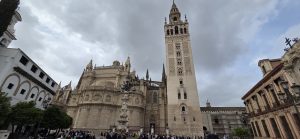
The next stop in the Old Town is the Seville Cathedral, the third largest gothic cathedral, diminished only by St. Peter’s in Rome and St. Paul’s in London. We had time to wander among the wood, brass and gold leaf altars, and admire the stained glass, religious icons and paintings throughout. Some of the bones of Christopher Columbus are enshrined in an altar in his honour, and his son Diego is also buried there. There is a charge to enter now, which seems to be a common trend in many of the larger churches in Europe.
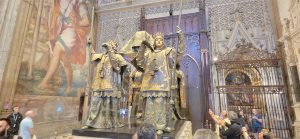
Located a short walk from the centre of the city, Seville has a bullring and accompanying museum we would have loved to explore. No matter your personal stance on bullfighting, the tradition and culture are very much alive and well in the south of Spain.
Take the time as well to wonder through the enchanting shops searching for that perfect souvenir, or find a table outside to enjoy a lunch of traditional fare and people watch. However you choose to fill your time while in Seville will be enjoyable. And don’t worry if you miss anything, Seville is a city you can return to over and over again.
